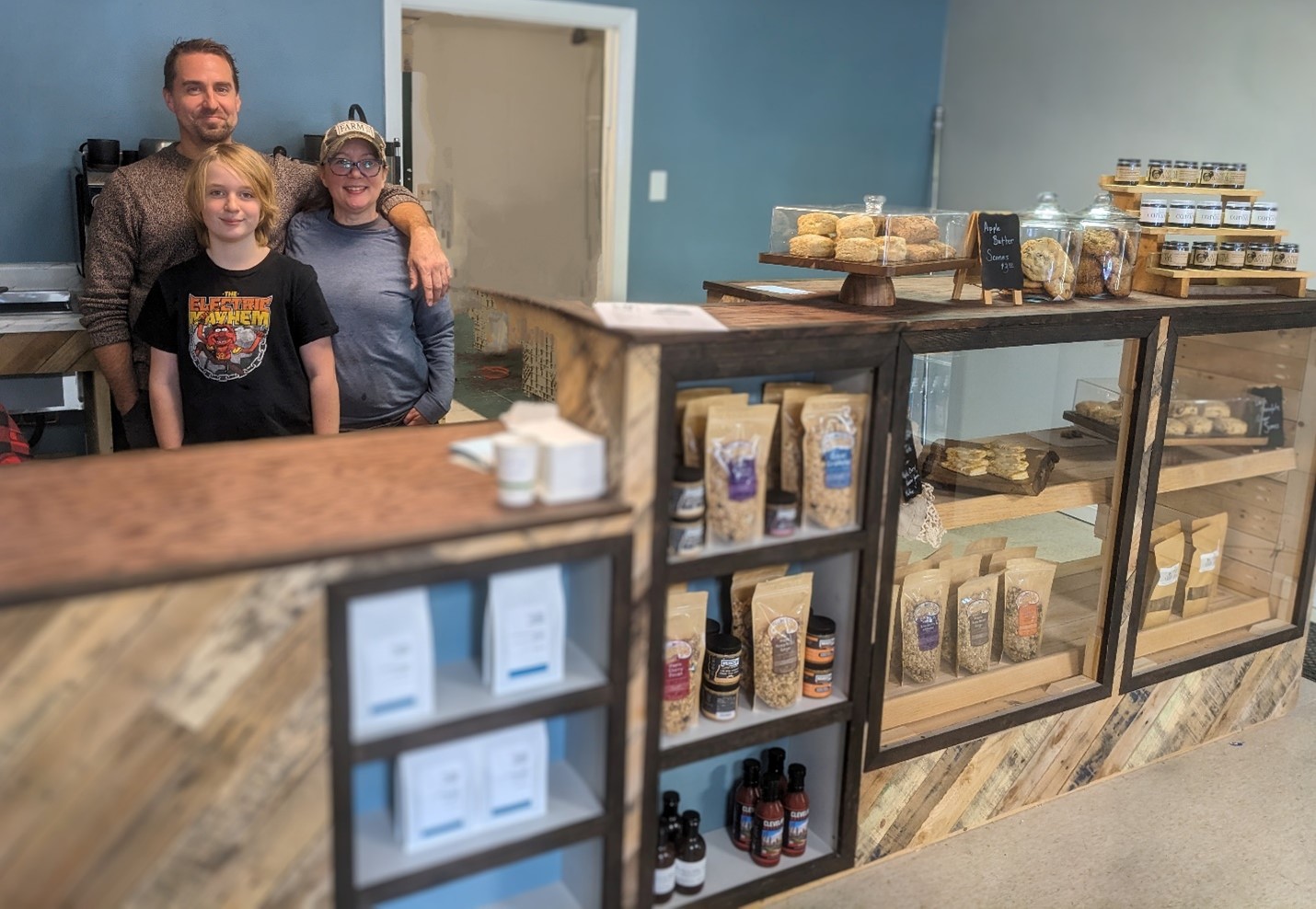
By Sadie Brown, Poultney Mettowee Natural Resources Conservation District
Janis and Jason Reinke operate a small, diversified farm in Castleton, Vermont located along Sucker Brook, within the Castleton River Watershed. This parcel has historically been used for agricultural purposes and housed a small beef herd prior to the Reinke’s purchased in 2020. Since moving to Vermont, the Reinke family have been working on expanding their farm and rebuilding the soils of the close to one hundred acres that make up the Frog Hollow Farmstead.
The Farmstead bases their operation on organic and permaculture principles with a focus on raising heritage breed animals, including cattle, sheep, pigs, and chickens, and growing heirloom, open pollinated produce. Following their passion for food and community, the Reinke’s also operate a small café which features products from their own farm, a seasonal menu, and features products from other local farms and small businesses.
With Sucker Brook and a small tributary running through the farming operation, the Reinke’s were mindful of the impacts their farm may pose to the waterway, especially as they grow their operation. “The pasture, where the buffer and planting were done, is where animals would over-winter. The brook is a downstream water source for many of our neighbors, and the animals have had unrestricted access to the brook in past years.” Says owner Janis Reinke.
Past water quality monitoring data through the DEC LaRosa Monitoring Program has shown this section of Sucker Brook as having elevated nutrient levels. In addition to the known water quality concerns in the watershed, the parcel, which is now the Frog Hollow Farmstead, was identified as a project location in the 2016 Storm Water Master Plan (SWMP) conducted by the Poultney Mettowee Natural Resources Conservation District (PMNRCD). This area of the watershed has long been a focus for the PMNRCD, so when staff with the Conservation Reserve Enhancement Program (CREP) and United States Fish and Wildlife Service (USFWS) reached out about partnering on this project, the District was more than happy to collaborate.
The 2024 project included a 3.88 acre planted buffer, invasive plant removal, exclusion fencing along Sucker Brook and a small tributary, and three designated stream crossings for animals. In May 2024, District staff, through the Champlain Valley Native Plant Restoration Nursery, and local volunteers planted the area, converting former low-quality pasture into a diverse forested buffer.
“We are really looking forward to recreating natural woodland areas throughout the farm that attract wildlife, birds, and are filled with native trees and shrubs.” Janis shared, “Many of our neighbors have also stopped to share their excitement for the project and are anxious to see the changing landscape.”
The new buffer, planted with 1,360 native tree and shrub species such as willows, dogwoods, viburnums, and evergreens, will have many positive impacts and help to address several issues the farm and this watershed are experiencing. The goals of this project include reducing nutrient runoff, managing the active erosion occurring on the stream banks, shading the water to promote fish habitat, and allowing the brook access to a functioning vegetated floodplain.
“The project at Life of the Table (Frog Hollow Farmstead) has allowed us to protect both Sucker Brook and its tributary from livestock impacts. Through CREP we were able to install fencing to exclude the livestock from the streams and establish a riparian forest buffer at no cost to the landowner. The exclusion fence improved water quality protections immediately and a mature riparian forest buffer will improve both water quality and aquatic and terrestrial wildlife habitat.” Says Phil Wilson with CREP.
The success of projects like these requires coordination and collaboration between partners, while keeping the farmer and their goals for the land at the forefront of the work. “The Poultney Mettowee Natural Resources Conservation District was a valuable partner on the project. They sourced high quality plant material and, as always, took great care with handling and planting the trees and shrubs” shared Ben Gabos with CREP, “The District staff also creatively worked around farm logistic issues that delayed planting in some project areas and communicated effectively with CREP staff and farm owners to complete the planting without compromising the health of the plant material and success of the project.”
Funding for the project was provided by Vermont’s Conservation Reserve Enhancement Program, United States Fish and Wildlife Service, and Pur Projet. If you would like to learn more about this project (and others!) check out the Summit to Shores video series through the Lake Champlain Basin Program.

